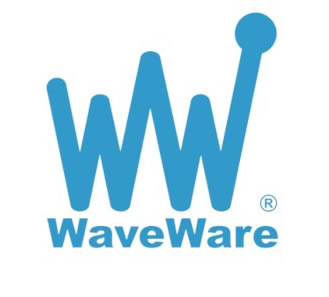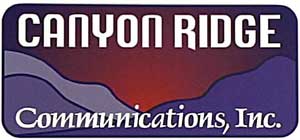Selected portions of the BloostonLaw Telecom Update, and/or the BloostonLaw Private Users Update — newsletters from the Law Offices of Blooston, Mordkofsky, Dickens, Duffy & Prendergast, LLP are reproduced in this section with the firm’s permission.
| BloostonLaw Telecom Update | Vol. 18, No. 19 | May 6, 2015 |
New A-CAM Map Released; Corrections Due May 11 (original data) or May 15 (revisions)The Wireline Competition Bureau (WCB) has released a revised version of the Alternative Connect America Cost Model (A-CAM) map, which can be found here. The revised map makes changes to central office (Node0) locations and the default locations for certain carriers. According to the WCB, the revised map replaces Node0 locations in 98 service areas, which can be viewed here. The revised map also makes changes to nineteen service areas that had both a GeoResults Node0 location, shown in cross-hatch, and a white dot showing another Node0 location. The revised map shows only cross-hatch for these service areas. Rate-of-return carriers that have proposed corrections to the Node0 locations newly revised in the Public Notice should submit those corrections through the A-CAM Support desk (cacmsupport@costquest.com) by May 15, 2015. Corrections to service areas and Node0 locations in the original map are still due May 11. Headlines
FCC Releases Special Access Data Collection Respondents, Seeks Comment on InaccuraciesOn May 1, the FCC has published a list identifying (1) the entities that filed data and information regarding special access services and (2) the entities filing certifications indicating that they are not covered by the scope of the special access data collection. (WC Docket No. 05-25; RM-10593)
Pursuant to the special access data collection, providers, certain purchasers of special access services, and certain entities providing “best efforts” services were required to submit data and information concerning special access services or, if applicable, a certification indicates that they are not covered by the special access data collection. Public access to the collected data will be available consistent with the restrictions contained in a protective order. The FCC invites interested parties "wanting to bring attention to inaccuracies or omissions in the lists" to send an email to SPADC@fcc.gov. The FCC asks that the email contain the "contact information for the sender (name, title, company represented, telephone number and e-mail address) and details regarding any inaccuracies/omissions." Supreme Court Denies Certiorari on Petitions Seeking Review of the Transformation OrderOn May 5, the Supreme Court denied Certiorari on all of the petitions seeking review of the 10th Circuit's decision upholding the FCC's Transformation Order. The petitions, filed by NARUC, U.S. Cellular Corp., Cellular South, Inc. and Allband Communications Cooperative, were previously described in the January 28 edition of the BloostonLaw Telecom Update. The denial of certiorari brings to an end the legal challenges to the FCC's interpretation in the Transformation Order of its authority under the Communications Act to reform intercarrier compensation and high cost universal service support, including the FCC's ability to impose bill and keep as the default compensation mechanism. However, there are still mechanisms available for carriers seeking different results, including through the interconnection process. Any carriers seeking assistance to determine their options should contact the firm. Interface for Recertification of Study Area Boundaries is Available- Recertification due May 26As reported in the March 18 edition of the BloostonLaw Telecom Update, the accuracy of the study area boundary data on file with the FCC is required to be re-certified by May 26, 2015. Where the state commission filed the study area boundary data for an ILEC, the state commission should submit the recertification. However, where the state commission did not submit data for the ILEC and the ILEC submitted the study area boundary data, then the ILEC should submit the recertification by May 26, 2015. The WCB's data collection interface to allow for the recertification of data and instructions can be found at https://www.fcc.gov/encyclopedia/study-area-boundary-data-collection. Senator Thune Investigates Suspected Bid-Rigging by DISH and its DEs in FCC AuctionAs the BloostonLaw Telecom Update was going to press last week, Senate Commerce Committee Chairman John Thune (R-S.D.) sent document request letters to the FCC, DISH Network, and two DISH affiliate companies (Northstar Wireless and SNR Wireless) that were designed to qualify for small business bid credits and which ultimately received more than $3 billion in bidding credits. The letters ratchet up the pressure against DISH Network, since it is now under formal investigation for violations of antitrust law in connection with the recently-concluded AWS-3 auction, also known as Auction 97. “The Committee has significant questions about whether conduct surrounding the bidding strategies employed by DISH Network and two affiliates adhered to both the letter and intent of the law, since it may ultimately cost three billion dollars in public funds,” said Sen. Thune on sending the four letters. “While the FCC is reportedly already looking at whether DISH broke auction rules, an examination of how these affiliated companies approached the auction is the only way for Congress to determine whether this three billion dollar price tag was appropriate or a result of wrongful conduct, flawed agency rules, or laws Congress must update.” Copies of the document request letters are provided below: Letter to FCC
Letter to DISH Network
Letter to Northstar Wireless
Letter to SNR Wireless LicenseCo.
The FCC’s auction rules allow affiliated bidders to share and coordinate some information if they entered a joint bidding agreement that is disclosed to the FCC, but the Commission also warns that bidders that disclosing a joint bidding agreement does not exempt them from anti-trust laws. With respect to DISH, Northstar and SNR, bidding data released after the auction had ended showed that bidding by these entities was very tightly coordinated. This data appears to show that the companies would frequently bid on the same licenses, and after all other competitors ceased bidding, they would not continue to compete among themselves; DISH itself bid aggressively on hundreds of licenses in the early rounds of the auction before dropping out when it was only competing against Northstar or SNR; and in numerous instances, Northstar and SNR placed bids on the same license at the same price after not bidding on that license for many rounds. In the end, DISH (which was not eligible for small business bid credits) withdrew from bidding and did not win a single license. “Very small businesses” Northstar and SNR, won 702 licenses, representing 40% of the licenses available for bid, at a cost of $13.3 billion. Factoring in the 25% bidding credit, the total discount claimed by Northstar and SNR amounted to $3.3 billion. Sen. Thune’s letter observes that “the practical effect of the bidding activity of DISH, Northstar and SNR may have been to suppress rival bidders,” and that “[m]any of these rival bidders were small rural wireless companies” that were not even eligible for a discount under the FCC’s small business discount program. In examining the behavior of DISH and its DEs, Thune concludes “it is not difficult to draw comparisons to the activities described in Justice Department guidelines on common antitrust violations such as bid rigging, complementary bidding, and bid suppression.” “There may be acceptable explanations for theses similarities,” Thune wrote, “but the American public and Congress must be certain that no prohibited practices allowed some parties to derive an unfair benefit from Auction 97 and the public airwaves that the auction distributed.” The letters request responses as soon as possible, but by no later than May 15, 2015. An expeditious resolution of concerns is critical as the FCC is scheduled to conduct the Broadcast Incentive Auction sometime in 2016. The Commerce Committee has legislative and oversight jurisdiction of the FCC and its activities, including spectrum auctions. Law & Regulation
Deadline Established for Non-Service Initialized NPRMOn May 6, the FCC published in the Federal Register its Notice of Proposed Rulemaking aimed at curbing fraudulent 911 calls from wireless phones that lack call back capability. Comments are due June 5, and Reply Comments are due July 6. Specifically, the Commission is proposing to sunset the requirement for CMRS providers to transmit all wireless 911 calls “without respect to their call validation process.” Along with requiring CMRS providers to transmit 911 calls from customers with service contracts, the FCC’s 911 “all calls” rule currently requires carriers to transmit 911 calls originating from “non-service-initialized” (NSI) devices to PSAPs, including calls from devices associated with cancelled or delinquent accounts. An NSI device is a mobile device for which there is no valid service contract with any CMRS provider. As such, NSI devices have no associated subscriber name and address, and do not provide Automatic Number Identification (ANI) or call-back features. Because of these limitations, when a caller uses a NSI device to call 911, the PSAP typically cannot identify the caller. But in the nearly two decades since the rules were adopted, call validation methods of concern to the FCC are no longer in use and low-cost options for wireless services have increased. Additionally, public safety organizations that previously supported the NSI call-forwarding requirement have recently come to a consensus view that requiring 911 call forwarding from NSI devices does more harm than good. Bill Introduced in Alabama to Allow Municipalities to Provide Broadband Outside City LimitsOn April 30, a bill was introduced in the Alabama Senate that would remove current restrictions and allow municipalities to construct telecommunications and cable systems, and to provide related services (including Internet) to households outside city limits. Specifically, the bill would remove existing limitations that prevent municipal service providers from building networks and furnishing services to individuals outside of the municipality and police jurisdiction, territorial jurisdiction, or any area in which the municipality currently furnishes any other utility. The bill follows in the footsteps of the FCC’s recent Memorandum Order and Opinion granting petitions for preemption of similar restrictions in Chattanooga, Tennessee and Wilson, North Carolina, in which the FCC made clear it would not hesitate to preempt similar statutory provisions in factual situations where it finds those statutes function as barriers to broadband investment and competition. The bill has been referred to the Senate Committee on Transportation and Energy, and is currently scheduled for a hearing on May 7. Failure to File Form 499-A Registering as Telecom Provider Nets $100,000 NALAll interstate telecommunications service providers are required to first register with the FCC through the Universal Service Administrative Company (USAC) by filing FCC Form 499-A, thereby allowing USAC to assess payments into the Universal Service Fund based on their interstate revenues. As many of our clients know, USAC and the USF were created by the 1996 Telecom Act and the subsequently adopted rules of the FCC. USAC is an independent, non-profit corporation that collects mandatory contributions from telecom carriers based on interstate revenues and then distributes the funds to eligible USF programs, including affordable telephone service to high cost and low income areas, rural health care facilities, and schools and libraries; hearing and speech disabled access to telephone services; telephone number portability; and a uniform dialing system in North America. Inquiry and investigation by the FCC’s Enforcement Bureau showed that Simple Network, Inc., a New Jersey company that has been in prepaid calling card business for 15 years, had failed to register with the FCC and USAC. As a result, the FCC has issued Simple Network a Notice of Apparent Liability (NAL) in the amount of $100,000 for failing to register as required. Simple Network’s failure to register, claimed the FCC, allowed the company to avoid payments that support federal programs, including USF, and potentially created higher fees for companies that complied with the registration requirement, thereby giving Simple Network an unfair advantage. Simple Network has 30 days from the issuance of the NAL to either pay or contest the proposed fine. FCC Issues Tentative Agenda for May 21 Open MeetingOn April 30, the FCC issued a tentative agenda for its May 21 Open Meeting. At the meeting, the FCC will consider: - a proposal to extend accessibility rules for emergency alerts to “second screens,” including tablets, smartphones, laptops, and similar devices;
- a Second Report and Order and Second FNPRM on taking additional steps to make emergency information in video programming accessible to individuals who are blind or visually impaired; and
- an Order to extend the National Deaf-Blind Equipment Distribution Program and consider a Proposed Rulemaking to permanently extend the program.
The meeting will be shown live at www.fcc.gov/live. Industry
U.S. To Change Stance on Secret Phone TrackingThe Wall Street Journal is reporting that the Justice Department will start revealing more information about the government’s use of cellphone tracking devices and has launched “a wide-ranging review” into how law enforcement agencies use this type of technology. For years, such devices were used without a warrant. The Justice Department also indicated it recognized the need to be more forthcoming about how and why such devices are used. The devices in question, known as IMSI catchers but more colloquially as Stingrays, Hailstorms, or Dirtboxes, were first designed to hunt terrorists and spies overseas, but are increasingly being put to use by local police departments to hunt all types of criminals. According to the article, the Justice Department itself uses planes equipped with the devices, which essentially function as fake cellphone towers, to fly overhead to scan thousands of cellphones looking for a suspect. Non-suspect phones are “let go” when the suspect is found and the device then focuses on gathering information. The device then “lets go” of the suspect’s cell phone as officers move into position and pick up the trail with a handheld device. According to the Journal, a Baltimore police official, for example, told a local judge overseeing a murder case last month the department had used the devices at least 4,300 times dating to 2007. Concerns have also been expressed over the possible abuse of emergency exception that allows police to request data from phone companies, such as the last known location of a suspect’s cell phone, without a court order. Typically, the Journal reported, phone company employees don’t ask questions to verify the nature of the emergency. “We know it’s got to come out,” one law-enforcement official said to the Journal. “At some point, it becomes more harmful to try to keep it secret than to acknowledge it. We just want to acknowledge it carefully and slowly, so we don’t lose what is a very effective tool.” Deadlines
JUNE 1: FCC FORM 395, EMPLOYMENT REPORT. Common carriers, including wireless carriers, with 16 or more full-time employees must file their annual Common Carrier Employment Reports (FCC Form 395) by May 31. However, because May 31 falls on a Sunday this year, the filing will be due on June 1. This report tracks carrier compliance with rules requiring recruitment of minority employees. Further, the FCC requires all common carriers to report any employment discrimination complaints they received during the past year. That information is also due on June 1. The FCC encourages carriers to complete the discrimination report requirement by filling out Section V of Form 395, rather than submitting a separate report. JULY 1: FCC FORM 481 (CARRIER ANNUAL REPORTING DATA COLLECTION FORM). All eligible telecommunications carriers (ETCs) must report the information required by Section 54.313, which includes outage, unfulfilled service request, and complaint data, broken out separately for voice and broadband services, information on the ETC’s holding company, operating companies, ETC affiliates and any branding in response to section 54.313(a)(8); its CAF-ICC certification, if applicable; its financial information, if a privately held rate-of-return carrier; and its satellite backhaul certification, if applicable. Form 481 must not only be filed with USAC, but also with the FCC and the relevant state commission and tribal authority, as appropriate. Although USAC treats the filing as confidential, filers must seek confidential treatment separately with the FCC and the relevant state commission and tribal authority if confidential treatment is desired. JULY 1: MOBILITY FUND PHASE I ANNUAL REPORT. Winning bidders in Auction 901 that are authorized to receive Mobility Fund Phase I support are required to submit to the Commission an annual report each year on July 1 for the five years following authorization. Each annual report must be submitted to the Office of the Secretary of the Commission, clearly referencing WT Docket No. 10-208; the Universal Service Administrator; and the relevant state commissions, relevant authority in a U.S. Territory, or Tribal governments, as appropriate. The information and certifications required to be included in the annual report are described in Section 54.1009 of the Commission’s rules. JULY 31: FCC FORM 507, UNIVERSAL SERVICE QUARTERLY LINE COUNT UPDATE. Line count updates are required to recalculate a carrier's per line universal service support, and is filed with the Universal Service Administrative Company (USAC). This information must be submitted on July 31 each year by all rate-of-return incumbent carriers, and on a quarterly basis if a competitive eligible telecommunications carrier (CETC) has initiated service in the rate-of-return incumbent carrier’s service area and reported line count data to USAC in the rate-of-return incumbent carrier’s service area, in order for the incumbent carrier to be eligible to receive Interstate Common Line Support (ICLS). This quarterly filing is due July 31 and covers lines served as of December 31, 2014. Incumbent carriers filing on a quarterly basis must also file on September 30 (for lines served as of March 31, 2015); December 30 (for lines served as of June 30, 2015), and March 31, 2016, for lines served as of September 30, 2015). JULY 31: CARRIER IDENTIFICATION CODE (CIC) REPORTS. Carrier Identification Code (CIC) Reports must be filed by the last business day of July (this year, July 31). These reports are required of all carriers who have been assigned a CIC code by NANPA. Failure to file could result in an effort by NANPA to reclaim it, although according to the Guidelines this process is initiated with a letter from NANPA regarding the apparent non-use of the CIC code. The assignee can then respond with an explanation. (Guidelines Section 6.2). The CIC Reporting Requirement is included in the CIC Assignment Guidelines, produced by ATIS. According to section 1.4 of that document: At the direction of the NANPA, the access providers and the entities who are assigned CICs will be requested to provide access and usage information to the NANPA, on a semi-annual basis to ensure effective management of the CIC resource. (Holders of codes may respond to the request at their own election). Access provider and entity reports shall be submitted to NANPA no later than January 31 for the period ending December 31, and no later than July 31 for the period ending June 30. It is also referenced in the NANPA Technical Requirements Document, which states at 7.18.6: CIC holders shall provide a usage report to the NANPA per the industry CIC guidelines … The NAS shall be capable of accepting CIC usage reports per guideline requirements on January 31 for the period ending December 31 and no later than July 31 for the period ending June 30. These reports may also be mailed and accepted by the NANPA in paper form. Finally, according to the NANPA website, if no local exchange carrier reports access or usage for a given CIC, NANPA is obliged to reclaim it. The semi-annual utilization and access reporting mechanism is described at length in the guidelines. Calendar At A Glance
May
May 11 – Deadline to submit corrections to Alternative Connect America Cost Model map.
May 14 – Deadline for Comments on Further Issues on Competitive Bidding Proceeding.
May 15 – Deadline to submit corrections to Revised Alternative Connect America Cost Model map.
May 21 – Deadline for reply comments on Further Issues on Competitive Bidding Proceeding.
May 18 – Short Form Tariff Review Plan is due.
May 27 – Questions on terms in the FirstNet RFP are due.
May 29 – Comments on Short Form Tariff Review Plans are due. June
Jun. 1 – FCC Form 395 (Annual Employment Report) is due.
Jun. 5 – Reply comments on Short Form Tariff Review Plans are due.
Jun. 5 – Comments are due on the 9-1-1 Non-Service Initialized Device NPRM
Jun. 10 – Comments are due by 5 p.m. Eastern on the Broadband Opportunity Council Notice and Request.
Jun. 16 – Tariffs filed on 15 days’ notice are due.
Jun. 23 – Petitions to Suspend or Reject Tariffs filed on 15 days’ notice are due.
Jun. 24 – Tariffs filed on 7 days’ notice are due.
Jun. 26 – Replies to Petitions to Suspend or Reject Tariffs filed on 15 days’ notice are due.
Jun. 26 – Petitions to Suspend or Reject Tariffs filed on 7 days’ notice are due by noon Eastern Time.
Jun. 29 – Replies to Petitions to Suspend or Reject Tariffs filed on 7 days’ notice due by noon Eastern Time. July
Jul. 1 – FCC Form 481 (Carrier Annual Reporting Data Collection Form) is due.
Jul. 1 – FCC Form 690 (Mobility Fund Phase I Auction Winner Annual Report) is due.
Jul. 6 – Reply comments are due on the 9-1-1 Non-Service Initialized Device NPRM
Jul. 27 – Comments are due on FirstNet Draft RFP.
Jul. 31 – FCC Form 507 (Universal Service Quarterly Line Count Update) is due.
Jul. 31 – Carrier Identification Code (CIC) Report is due. | 




































 David George and Bill Noyes
David George and Bill Noyes






































